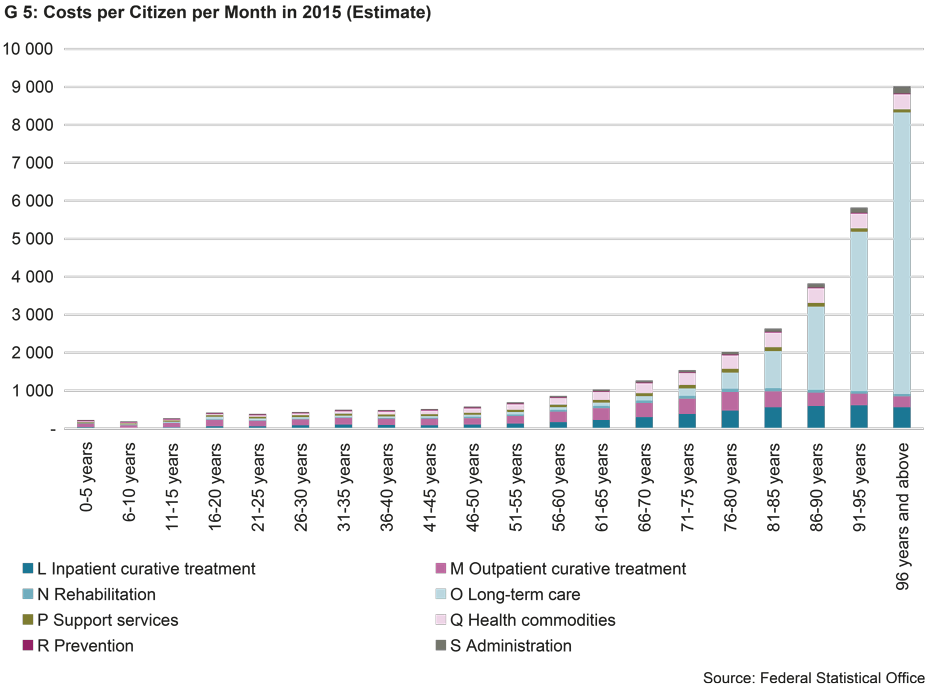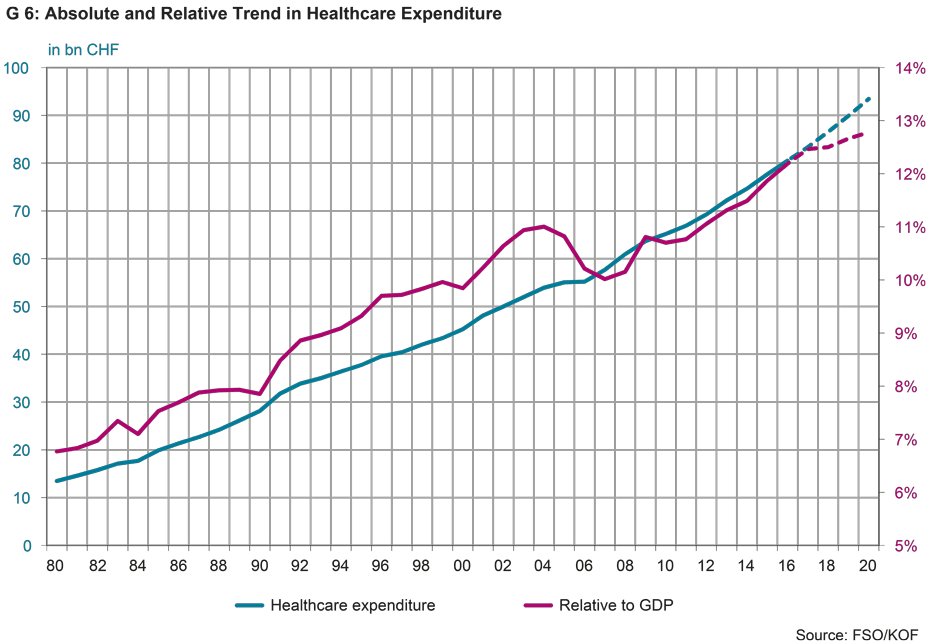Healthcare Expenditure Still on the Rise – Albeit at a Slower Pace Relative to GDP
- KOF Forecast of Health Expenditures
- KOF Bulletin
Healthcare spending is set to rise further in the coming years. However, the robust growth in nominal GDP as of 2018 will slow down the relative increase in healthcare expenditure compared to the gross domestic product. According to the KOF Forecast of Swiss Healthcare Expenditures, per capita spending will exceed CHF 10,000 a year. Furthermore, there will be a shift from inpatient to outpatient treatment.
Various factors affect the development of healthcare expenditure. Since healthcare is a very staff-intensive sector, developments in nominal wages are often reflected in the development of healthcare spending. The general economic situation also plays a role: During strong economic phases, demand for healthcare services tends to be higher than during weak phases. On top of this, the population structure and its general trend also play a role: Older population cohorts are particularly important in forecasts of healthcare spending since they consume more healthcare services, especially nursing services, per capita than younger cohorts (see G 5). Healthcare policy measures represent another relevant factor in the development of healthcare spending.

Robust trend in the coming years
Due to the healthy economic development, nominal wages rose faster this year than in the past few years. Older population cohorts are also expected to increase more substantially than in the preceding year. The amendment of the doctors’ fee schedule (TARMED) resolved by the Federal Council in October 2017 is to generate annual savings of CHF 470 million, while the reintroduction of drug price reviews will also keep costs slightly lower. All in all, healthcare expenditure is set to rise by 3.8% this year.
The anticipated 3.9% growth in the coming two years is only marginally higher. In 2019, both wage growth and the number of senior citizens is expected to increase faster than in 2018. Savings made through the prioritisation of outpatient over inpatient treatment and drug price reviews should slow down healthcare spending to some degree. In 2020, the rise in nominal wages will continue. However, the demographic trend is not expected to accelerate further in the foreseeable future.
Slower growth relative to GDP
With healthcare spending measured on a nominal basis, relative analysis compared to the nominal economic performance is also relevant. Lively growth of nominal GDP as of 2018 will slow down the rise in healthcare expenditure in relation to GDP. Hence, the healthcare spending quota will rise from 12.2% (2016) to 12.8% in 2020 (see G 6).

Shift from inpatient to outpatient care continues
Healthcare spending can be analysed from three different angles: Which services are offered ("services"), who provides the services ("service providers") and who pays for the services ("funding regimes"). Each of these categories consists of various subcategories.
In terms of individual categories, the "support services" in the "services" category are set to grow substantially, albeit at a slightly more moderate pace than in the recent past. Furthermore, we expect "outpatient curative treatment" to expand faster than "inpatient curative treatment". Among the "service providers", high growth rates are anticipated in the areas of "other outpatient service providers" and "support service providers". In terms of "financing regimes", the trend is more heterogeneous, although "mandatory heath insurance" and "self-paying patients" are expected to expand more swiftly than other subcategories.
Literature
KOF Prognose der Gesundheitsausgaben Herbst 2018, Marko Köthenbürger and Pauliina Sandqvist, KOF Studies, vol. 121, Zurich: KOF Swiss Economic Institute, ETH Zurich, 2018.
Contact
No database information available